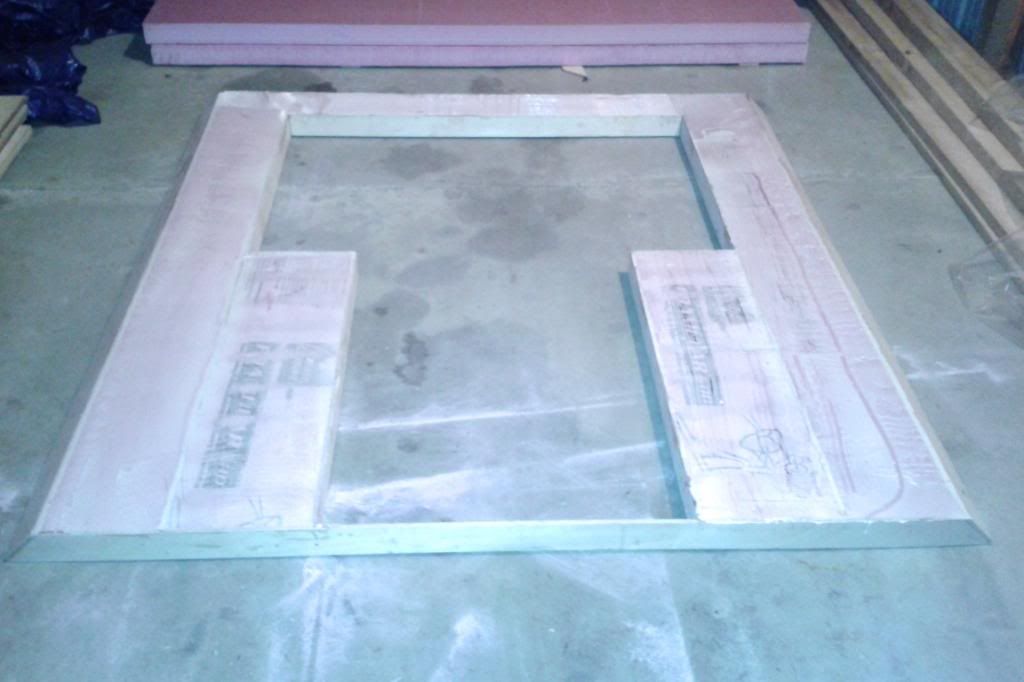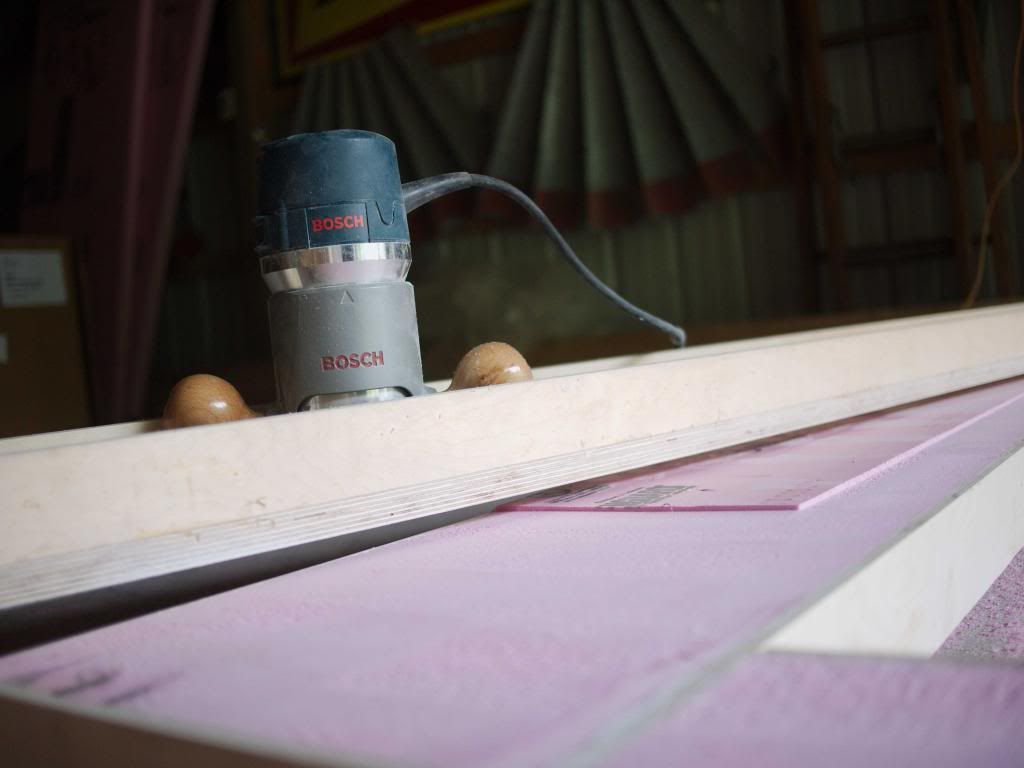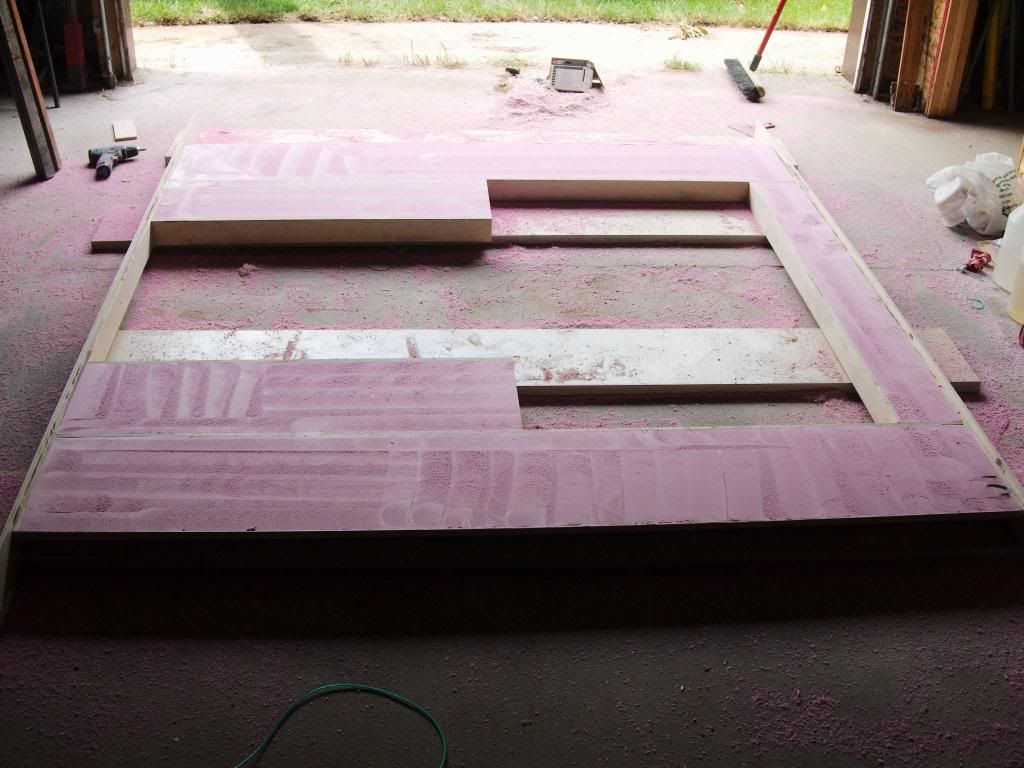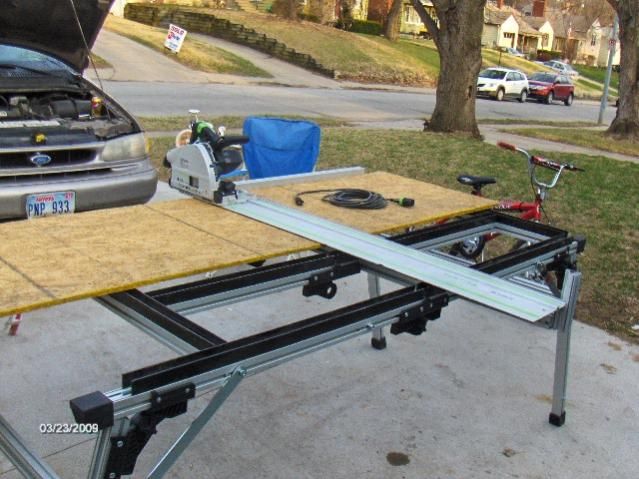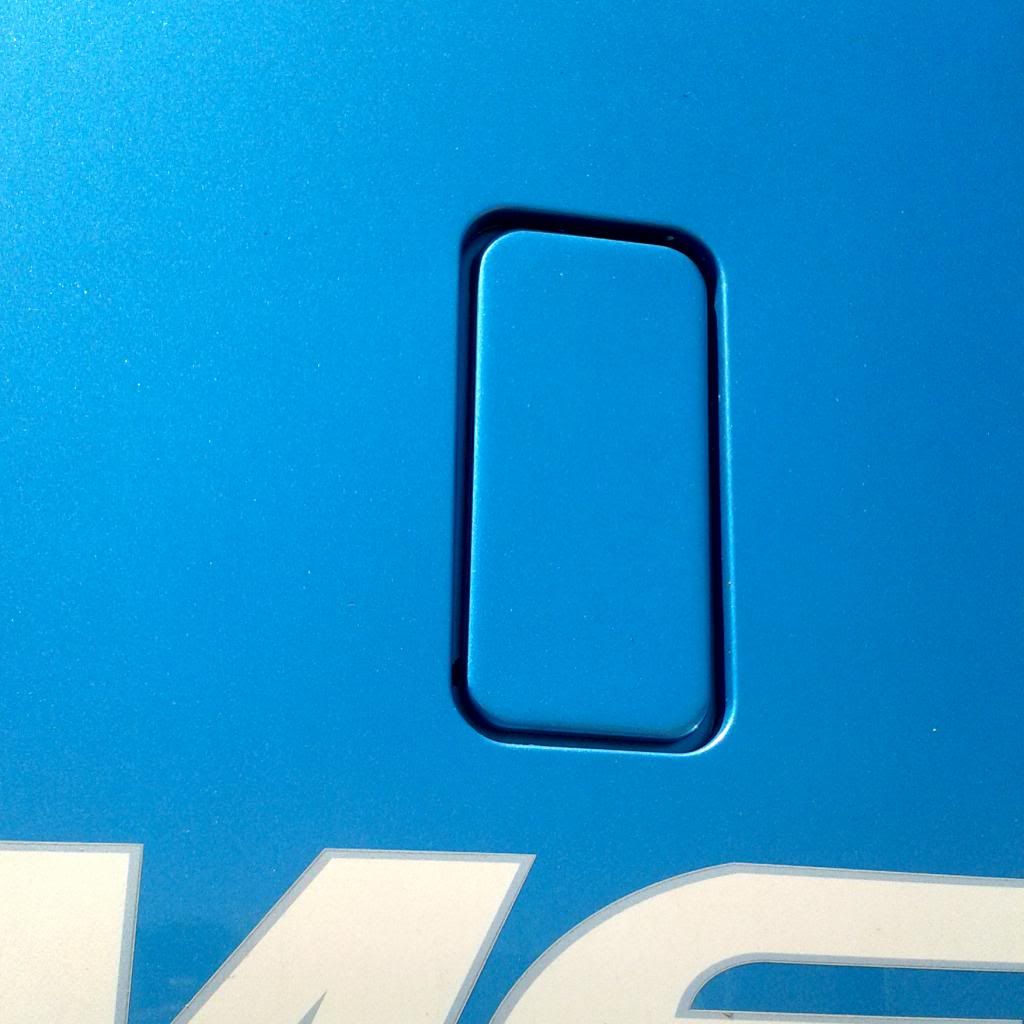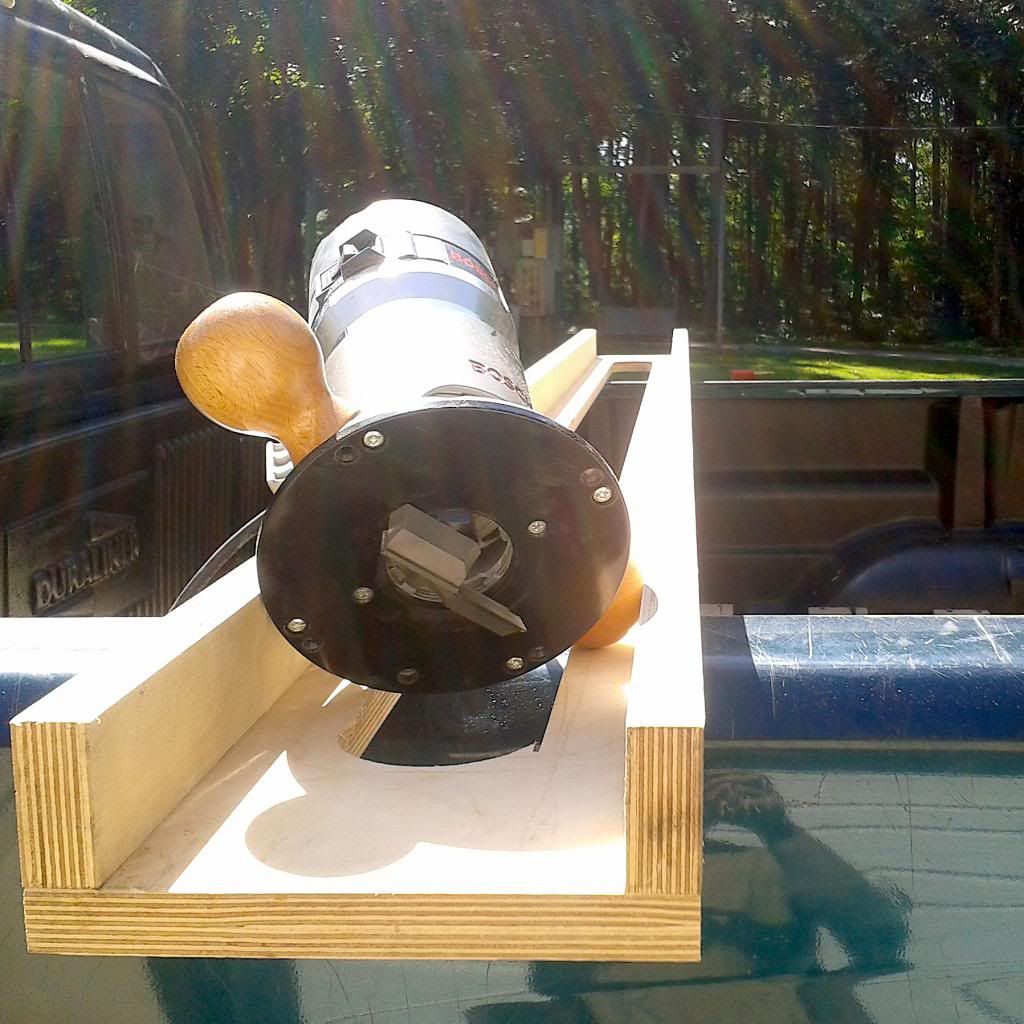Yeah the concrete isn't flat at all. I had it in a flatter location when I actually glued up the panel. I did not push down at all while I was routering. In fact I think the sled has a little flex in it, I guess I should have made the sides a little taller, but I was being cheap, that is about $40 dollars in birch as it is

. With that being said I would estimate that my sled has only about 1/32" - 1/64" of an inch variation over the 8 ft length. When I attach my guide rails on the side I figure another 1/64 of error when lining them up. The floor offering uneven support another 1/64th. So all in all this is way way way more accurate then sanding by eye. Faster as well.
I am trying to decide how to attach the walls to each other.
2 of my friends think I should assemble the box then fiberglass it. Personally I don't see how I can manage that. Even with scaffolding I just don't picture it working out very well. Maybe if I had a way of rotating the box as I worked? The benefits would be that you could tweek the walls to fit while they are still flexible, once they are glassed there will be no way to easily massage a crooked wall into fitting nicely. The 2nd benefit would be no seams to leak.
My original plan was to fiberglass the panels flat, following pods construction methods, then use epoxy resin and fiberglass tape to assemble the box. The downside to this is making it look good. My goal is to have zero body filler on the outside of the glass and these tape lines will be wavy and visible. The reason I don't want to do any fairing work on the outside of the glass is that the glass has a texture to it, sanded fairing compound will be smooth. This means that if I start fairing it out then I have to continue with the whole box if I want it professional looking. I have not decided on how I am going to finish the box. If I use a textured product like monstaliner it probably won't matter, but if I use an autobody style paint then I have a problem. Actually what if I use neither? What if I add some dye to the last layer of epoxy? Less work, and way way cheaper......
The 3rd idea I have is to use an adhesive like sikaflex 252 to attach the panels. The sikaflex would be 2-3mm thick which would offer some benefits. Hopefully it would add some flexibility to the box. As this is composite construction my fear is that it will be too stiff and will tear itself apart instead of just flexing a little. It should also have a dampening affect which should make the box last longer since vibration is another big concern when dealing with foam. My concerns are that it will be the weak link after a few years. It will have aged poorly leak loose strength.....
Any thoughts? Should I go with option 1, 2, or 3? Maybe a 4th option I haven't thought of?










